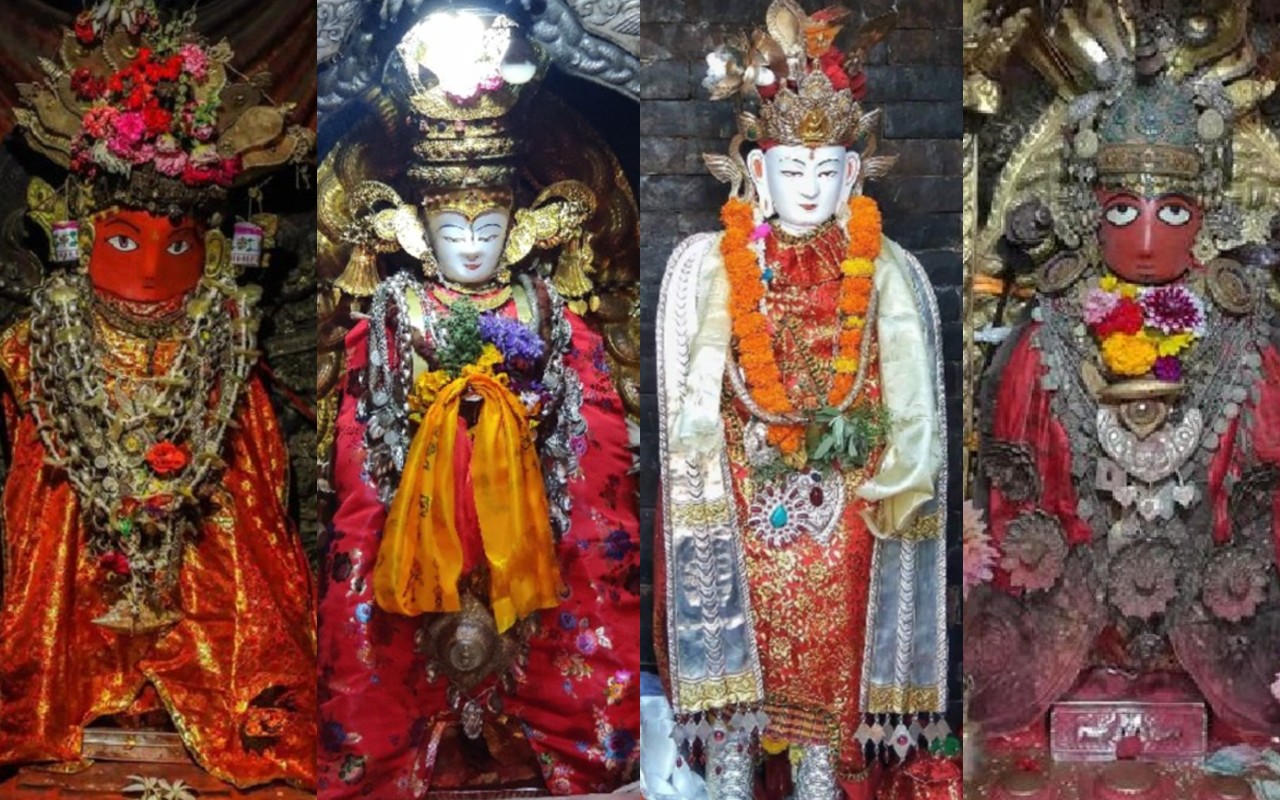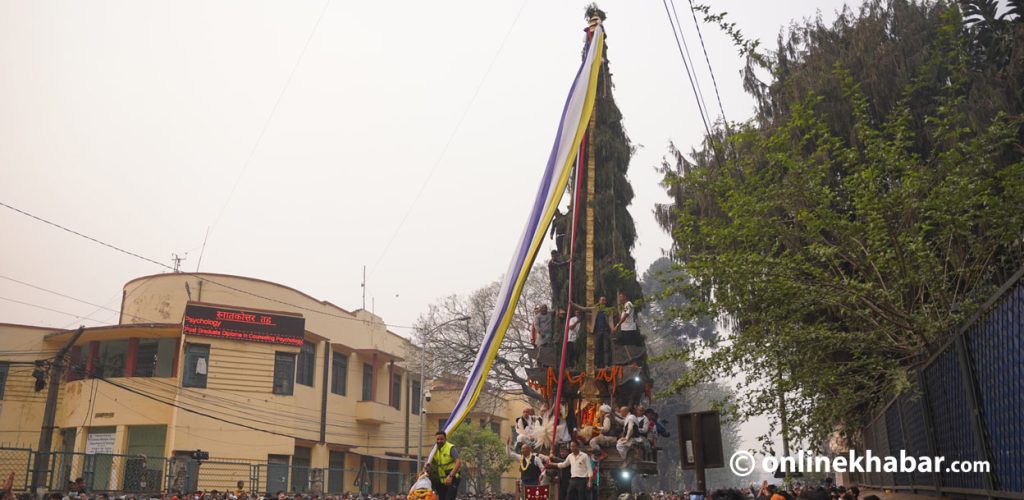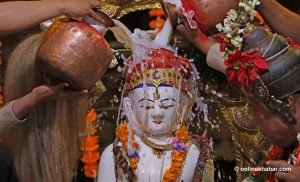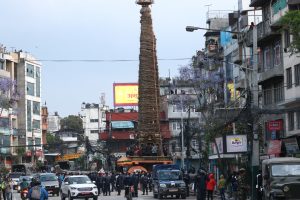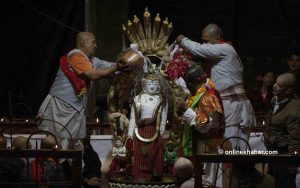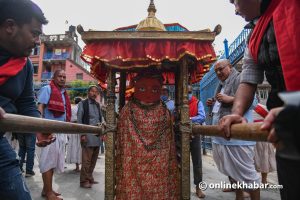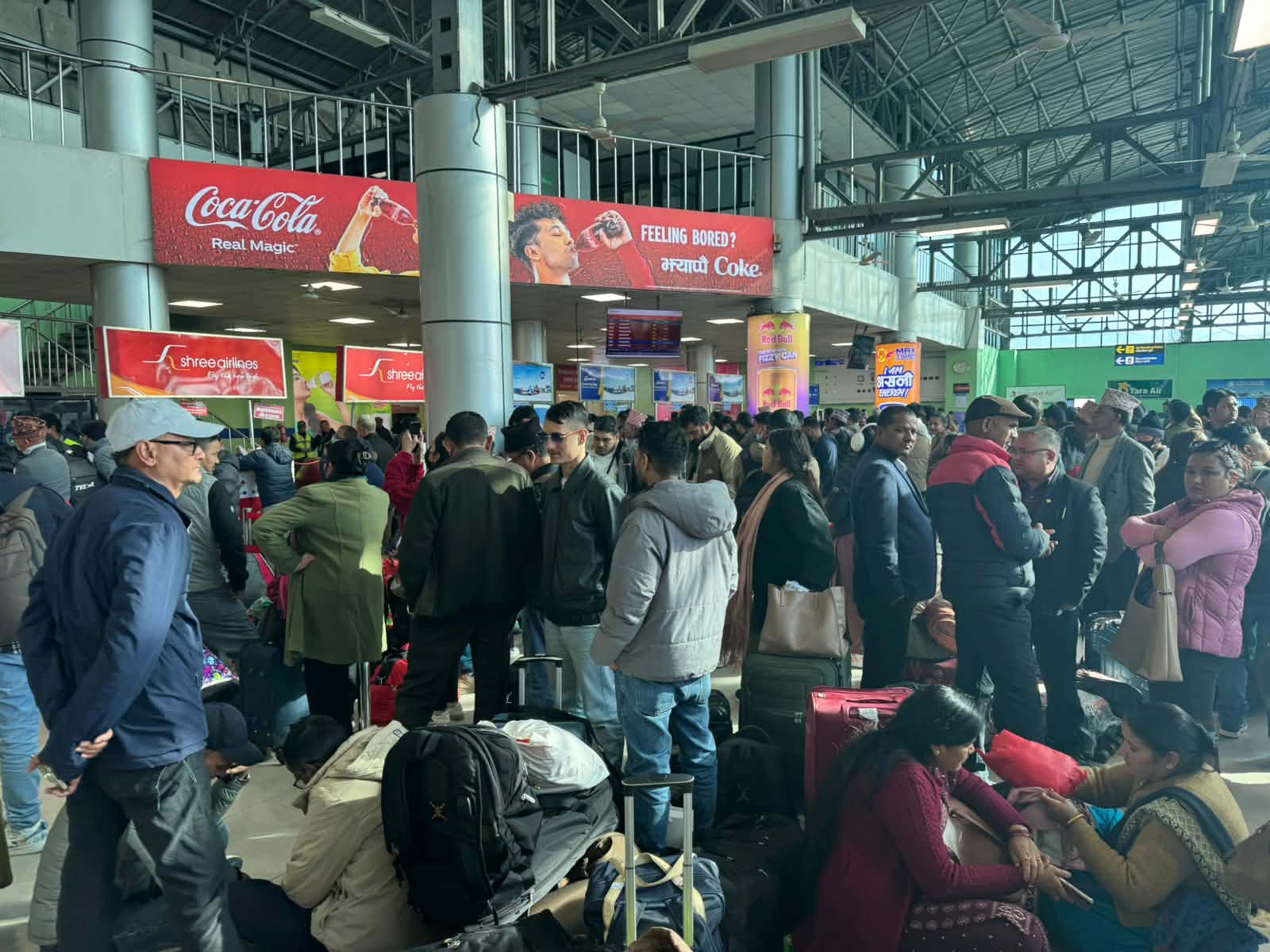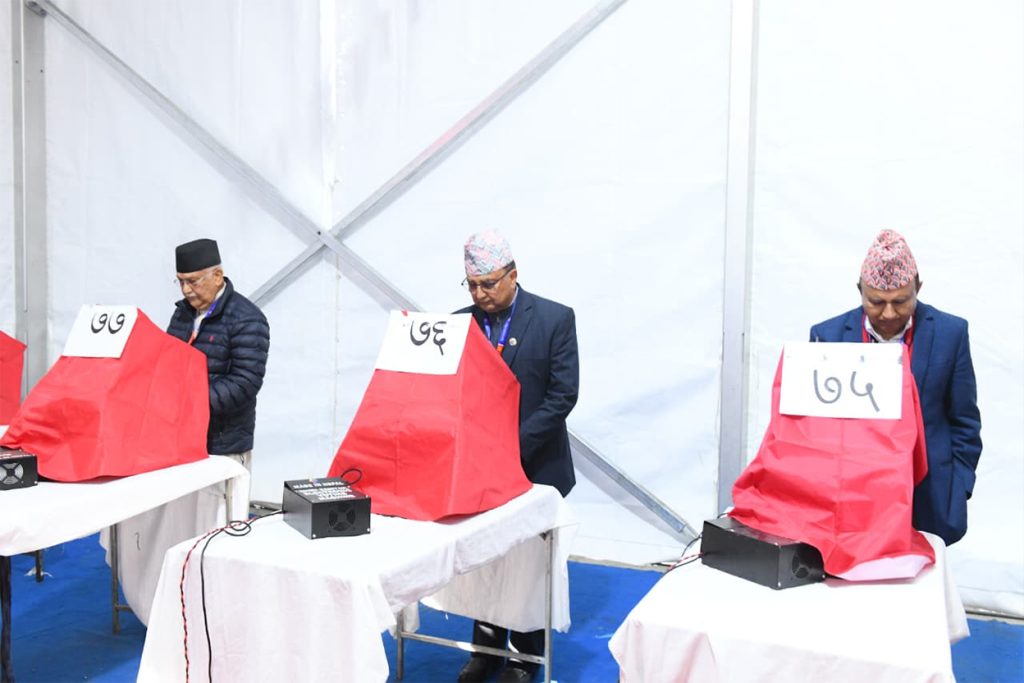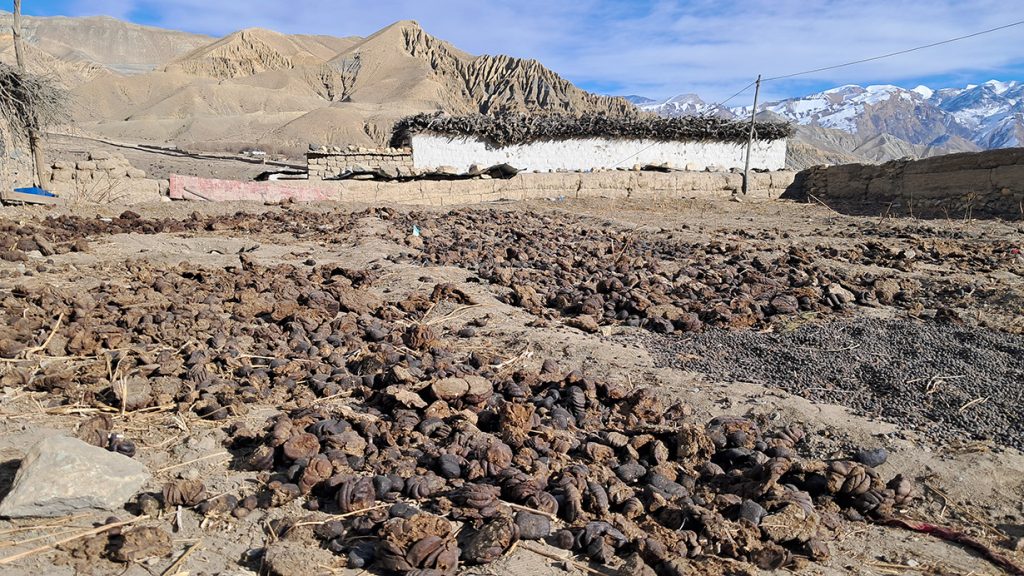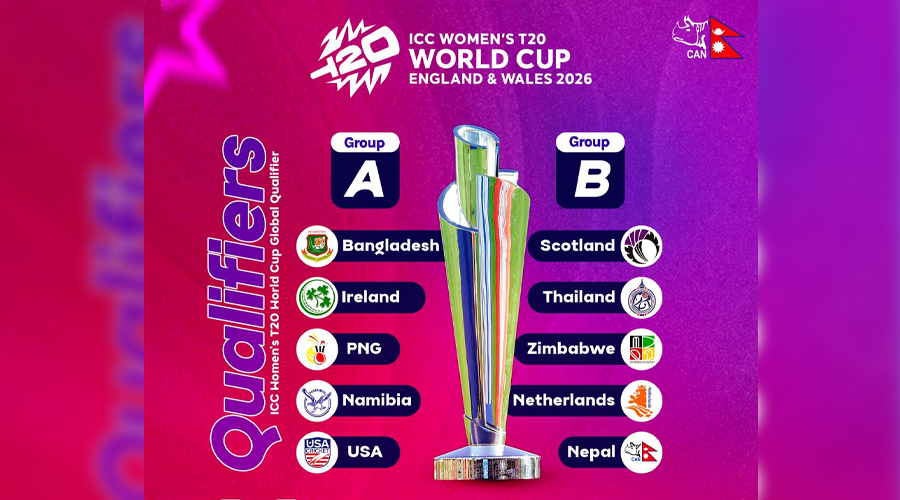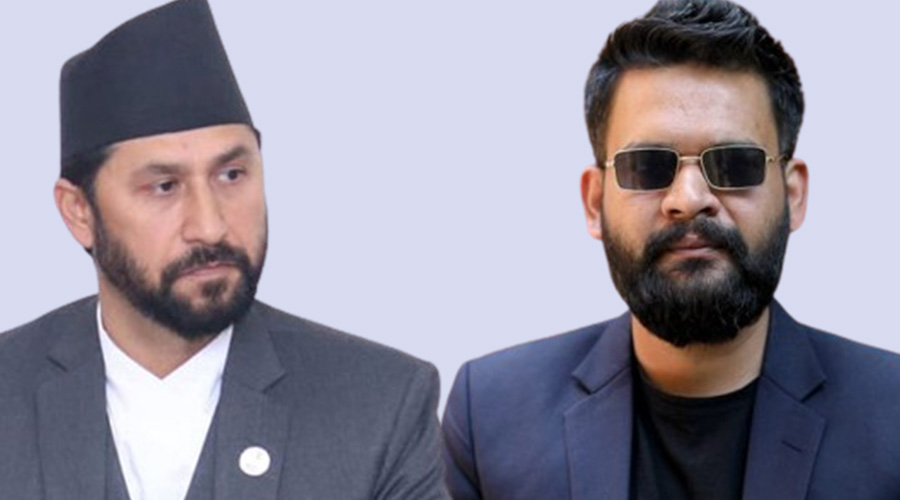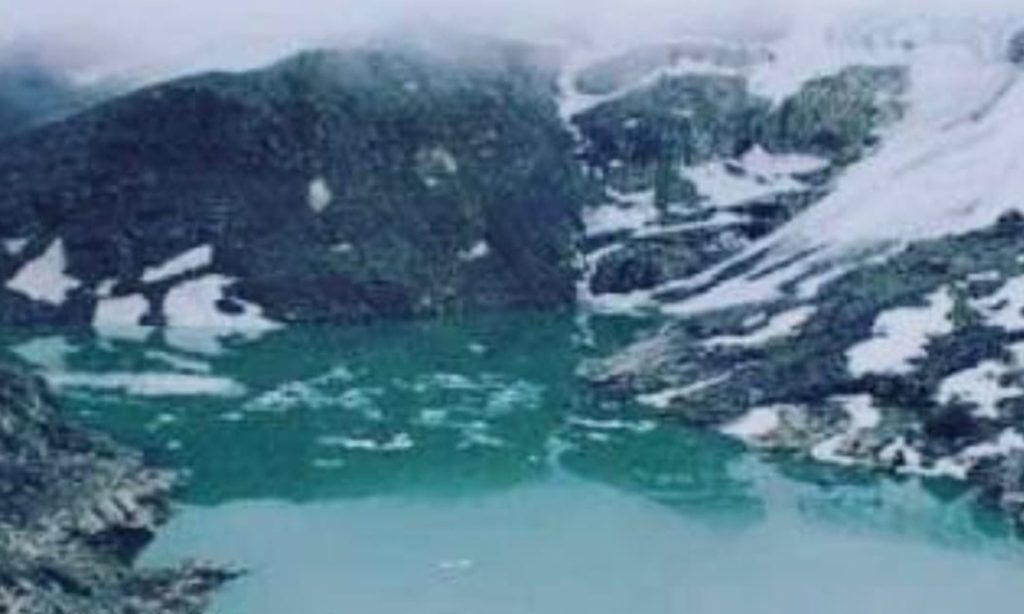Among many deities of different religions followed by the people of Nepal, Padmapani Lokeshwar or Avalokiteshwar is a deity worshipped by both Hindus and Buddhists. Lokeshwar is a deity, a form of Bodhisattva, said to be the source of all material energies that are said to help, guide and relieve a human mind of various difficulties. Because the deity is said to have the betterment of humankind at heart, it is also referred to as Karunamaya (a body of compassion).
There are 108 forms of Lokeshwar all around the world. They are also known as Machhindranath. It was in the 18th century that King Siddhi Narasimha Malla changed the name Lokeshwar into Matsyendranath/Machhindranath to impose Hinduism and diminish Buddhism in Kathmandu valley.
Among them, here are the four major Lokeshwars worshipped widely:
- Rato Machhindranath
- Seto Machhindranath
- Nala Karunamaya
- Chobhar Karunamaya
The indigenous people of the Kathmandu valley have dedicated temples, jatras, and rituals to these four forms of Lokeshwar. Here is all you need to know about the four deities.
1. Names
The four deities are four forms of the Lokeshwar but they have their own significance. Hindu people worship the deity as Matsyendranath/Machhindranath or a form of Lord Shiva whereas Buddhist people worship them as Avalokeshwar.
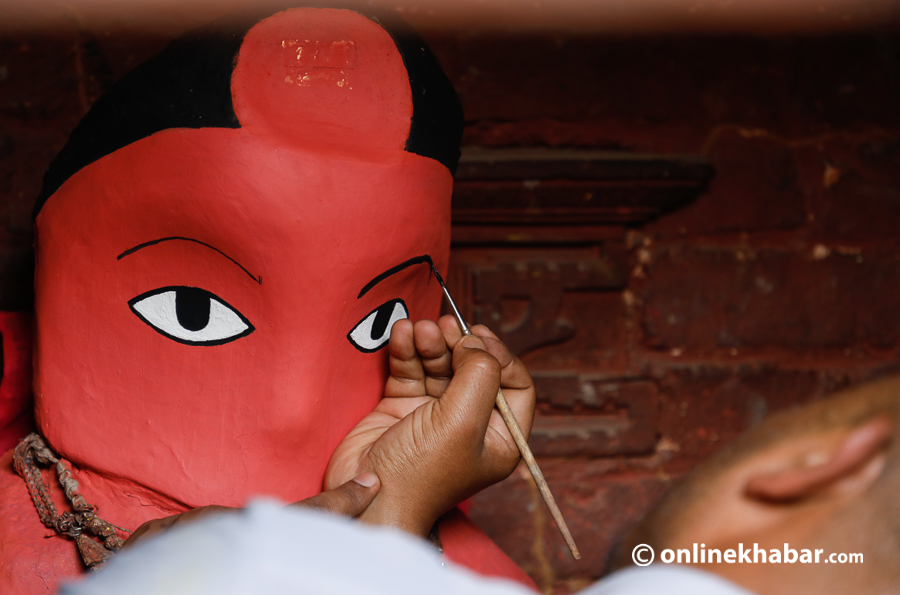
Among the four deities, two are red while two are white in colour. Rato Machhindranath of Lalitpur (‘rato’ means red) and Seto Machhindranath of Kathmandu (‘seto’ means white) directly get their names because of their colours.
However, Rato Machhindranath is also called Rakta Lokeshwar in Sankrit while Seto Machhindranath is the Avalokeshwar. Likewise, Nala Karunamaya is Shrishtikanta Lokeshwar and Chobhar Karunamaya Adinath Lokeshwar or Anandadi Lokeshwar.
Locally, the four deities belong to different locations. Rato Machhindranth is situated in Bungamati and is called Bunga Dyo, Seto Machhindranath is located in Janabahal and is called Janabahal Dyo. Similarly, Nala Karunamaya and Chobhar Karunamaya are locally called Nala Dyo and Chobaha Dyo respectively.
2. Reasons for worship
Seto Machhindranath is worshipped as the god of rain whereas Rato Machhindranath revered as the giver of rain and harvest. Nala Karunamaya is worshipped and respected as the creator of the world, and similarly, Adinath Karunamaya is worshipped for a healthy life. Overall, all the deities are respected for their love and support to humankind during their difficult times.
3. Locations

While three deities have one temple each, Rato Machhindranath has two. The main Rato Machhindranath temple is located in Karyabinayak, Bungamati, where the deity spends six months a year. Likewise, spends another six months at Machhindra Baha or Ta Baha of Patan.
Seto Machhindranath temple is located in Jana Bahal, Keltole between Ason and Indrachok and Nala Karunamaya is situated in Nala (near Banepa), Kavre and the temple of Adinath Karunamaya at the hilltop of Chobhar, Kirtipur.
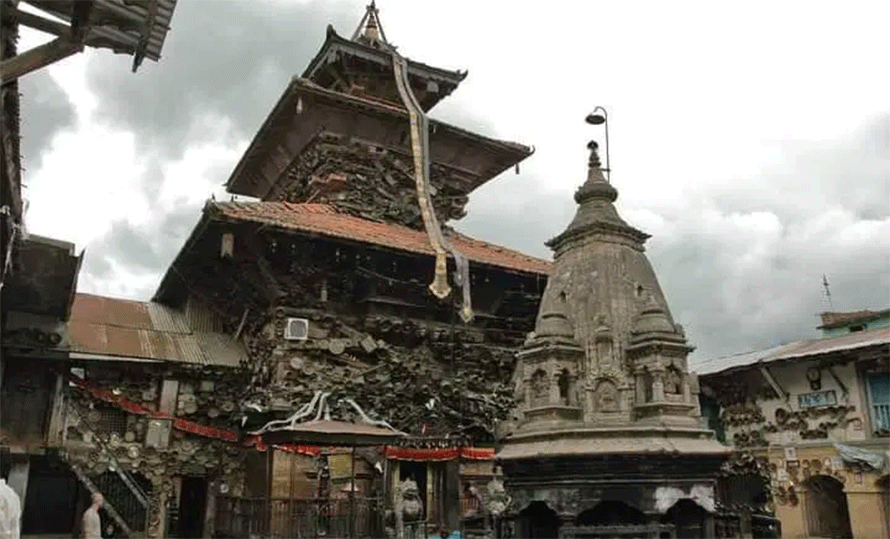
Members of the Bajracharya and Shakya clans of the localities take turns serving the deities as priests. The period ranges from a month to a year, and one or two at a time get their turns.
4. Origins
In Hinduism, there is a belief that Matsyendra/Machindranath was born under the wrong stars and was thrown into an ocean. A fish swallowed him and, while inside a fish belly, he started practising Lord Shiva’s secrets of yoga and became enlightened. Because of that, the deity gets the name Matsyendra or ‘Lord of the Fish’. There are a few variations in this story.
According to another story, Guru Gorakhnath was visiting Patan. As the sage did not get any alms from the locals, he captured all the rain-showering serpents. This resulted in Patan facing a drought for a long time. Then, the king of Patan invited Matsyendranath, Gorakhnath’s Guru, to Patan. All the serpents were then released and Patan started getting plenty of rainfall every year, thereafter calling it the god of rain. And, with locals still relying on agriculture, it is also regarded as the god of the harvest. This is also the suggested story of Rato Machhindranath.
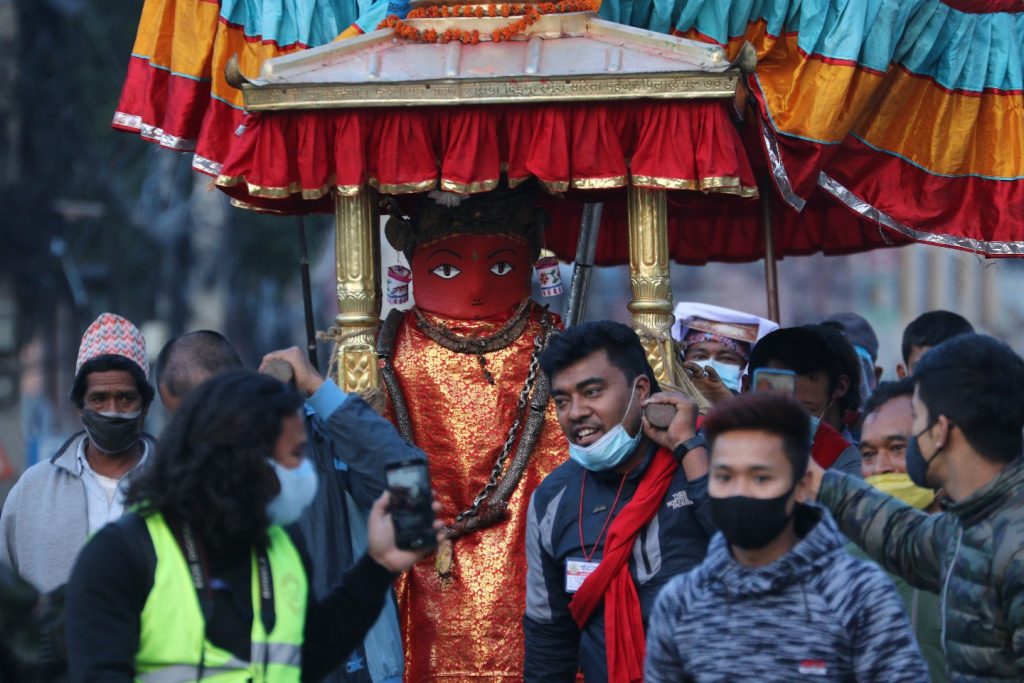
Further, it is said that during the Lichhavi period, the deity was reborn as the 108th son of King Shashi of Yaksha Desh or Kamarupa, which is Assam of India today. When the Kathmandu valley was in drought, the then King Narendra Dev, along with Tantrik priest Bandhudutta of Kathmandu and porter Ratanchakra of Patan, brought Rato Machhindranath from Assam.
For Seto Machhindranath, it is said that during the time of King Yaksha Malla, people believed that once a person took bathe in the holy river of Kantipuri and worshipped the Swayambhu deity, they would go to heaven after their demise. Once, Yamaraj (god of death) also came to the river for the same. But, when Yamaraj tried to go back, and was captured by the Malla king, who demanded immortality. So, Yamaraj prayed to Avalokiteshwar and a white being (Seto Machhindranath) came out of the water and freed him. The origin of today’s idol is said to have been found by a jyapu (worker) in a hole at Jamal and later set up in Janabahal of today.
Adinath Lokeshwar is also regarded as the form of Lord Manjushree and is believed to have taken the form after releasing the water from Kathmandu that was a lake, with a khadga (a kind of sword) at Chobhar.
Shristikanta Lokeshwar is regarded as the main Lokeshwar and the creator of the world. When people faced a drought and famine, an assembly of gods with locals concluded that it was because of King Dirgharath and his ill intentions. Then, Shristikanta Lokeshwar and Bhagawati rained elixir and crops grew again in Nagipuri. The locals requested the former deity to live among them, and she promised to adhere in the Kaliyug and appeared in Bungamati.
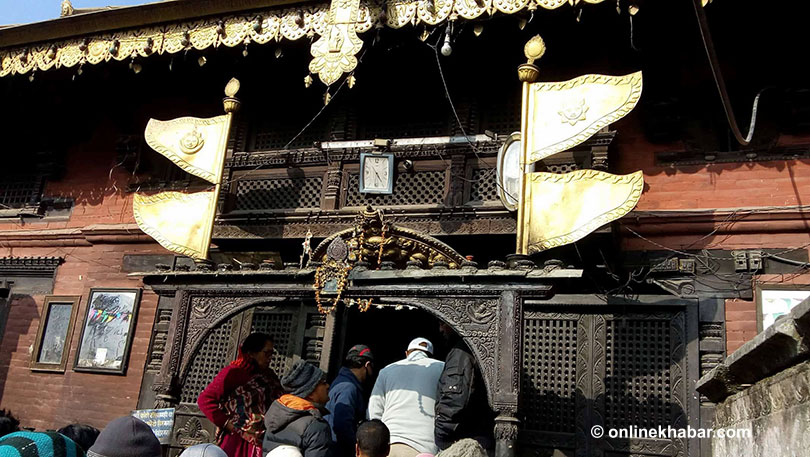
5. Jatras and their nature
All four deities have their different jatras and celebrations, and stories behind them. But, only two out of four deities–Rato and Seto Machhindranaths–have chariots while among the other two, Nala Karunmaya gets paraded on a khat (a kind of palanquin) and Chobhar Karunamaya gets paraded in a kalash (a holy pot).
The Rato Machindranath jatra is said to be carried out to expose gratitude to Guru Machhindranath. Also, it is said that in ancient times, Patan’s agricultural output was not good and to rectify that and make people efficient, the gods decided to carry out one jatra instead of 32 different festivals. Ever since then, the deity, along with Minnath, has been pulled around the city for locals to observe the Jatra.
It is also the longest chariot festival in Kathmandu and celebrated according to the lunar calendar. It starts from the fourth day of the waxing moon in Bachhala, the seventh month in the lunar calendar. The Rato Machhindranath chariot is made of bamboo, wood and is pulled by the devotees starting from Pulchok and goes to Gabahal, Mangal Bazar, Sundhara, Lagankhel, Kumaripati and Jawlakhel at the end. When the chariot reaches Lagankhel, there is a special coconut-throwing programme, and whoever catches the coconut is said to be blessed with a son. This festival is finished when the Bhoto Jatra, a ceremony where the bejewelled vest of the ‘rain god’ is shown in presence of the living goddess Kumari. And, Rato Machhindranath is returned to the temple of Bungamati for the next six months.
ALSO READ:
It is believed that when Seto Machhindranath came out of the water, and told King Yakshya to make a temple and a chariot procession where the god would check the people and bless them with joy and long life. Seto Machhindranath jatra is celebrated from Chaitra Shukla Ashtami, usually in March for three days. The deity Seto Machhindranath is carried in a wooden chariot from Jamal across Ason, Hanumandhoka, Jaisidewal and Lagan. It is also said to be the deity’s visit to his mother in Lagan.

Adinath Karunamaya was originally a god from Siddhipur (Thasi), but the villagers started to get ill and various kinds of diseases spread during his time there. So, the villagers threw the god in the stream nearby. When the god reached Nakkhu, it was discovered by a shepherd. The deity said to the local to install him in the temple at the top of Kachhapala hill of Chobhar and stayed there ever since. To commemorate this, Adinath Lokeshwar is taken near the river where the people of Chobhar found the god, Nakkhu Khola, for some rituals. After that ritual is done, the jatra officially begins and later on, Anandani Karunamaya is carried in a small chariot around the temple.
Nala Karunamaya is regarded as the creator of the world. The Lokeshwar was stolen from Bungamati by the Kiratis when the Kaliyug started. But, they could not take it far and threw the god in the Punyamati stream of Nala. The god called upon the priest of Nala, Bhaktapur’s king and paneju (priest) of Bungamati, after which it was found. After a debate, it was decided that the deity would be established at the Narayan temple of Nala. So, as a commemoration, an honour and a way to worship the god, the local people celebrate a jatra there every year. During the jatra, the Nala Dyo is taken out on a khat carried around the Nala.
6. Bathing rituals
The ‘nhawa’ or the snan (bathing) ritual of all the deities includes the activities where priests pour water, milk, ghee and honey at Nhawa Manda (a platform built for the ritual). The ritual is done yearly in the presence of the main priest. The deities undergo Dashkarma or ten rituals of life, including birth, coming of age ritual, wedding, etc.
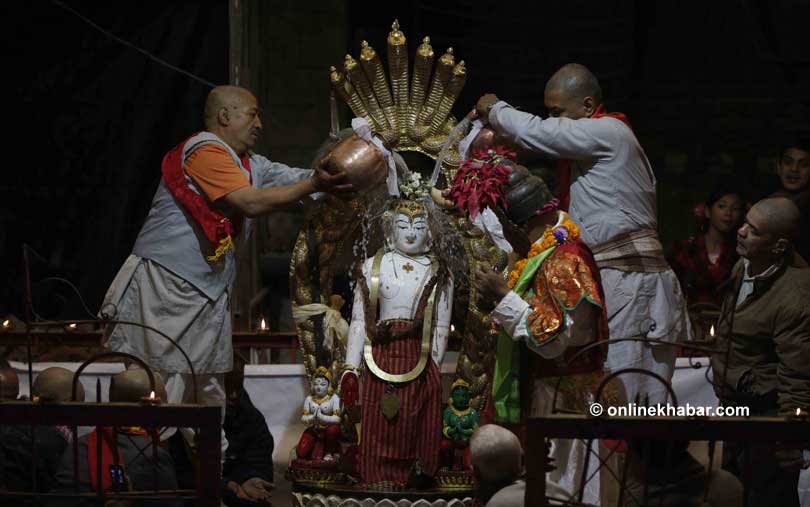
Annually, on Poush Shukla Ashtami, the eighth day of the waxing fortnight in the month of December-January, priests of Seto Machhindranath bring the deity into the courtyard in the premises of the Kanak Chaitya Mahavihar for the ritual, in presence of living goddess Kumari. The deity is kept covered beside the temple, repainted for the next week and reinstalled into its place after the dashkarma.
Similarly, 15 days before the chariot festival, the bathing ritual of Rato Machhindranath is performed in Lagankhel. The deity is taken to the platform on a khat, where all its ornaments and clothes of the deity are removed and the deity is bathed.
Likewise, on the next day after the new moon of Chaitra (Sukla Pratiprada), in March-April, the members of the Nemkul family carry the god to a platform in Nani Tole, where the bathing ceremony of Adinath Lokeshwar is held. Following the ritual, the jatra is held the next day.
Last but not least, on the first day of the bright half of the month Shrawan (July-August), the bathing ritual of Nala Karunamaya is performed right in front of the temple. And, after a week of this ritual, the Nala Karunamaya Jatra begins.



